
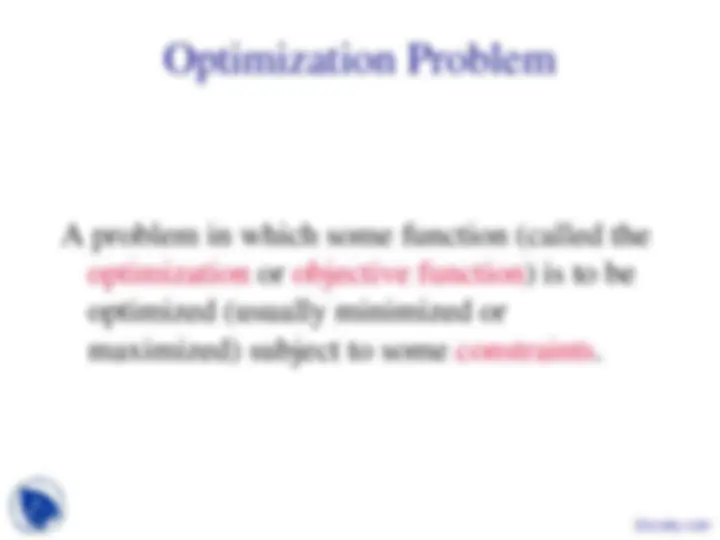
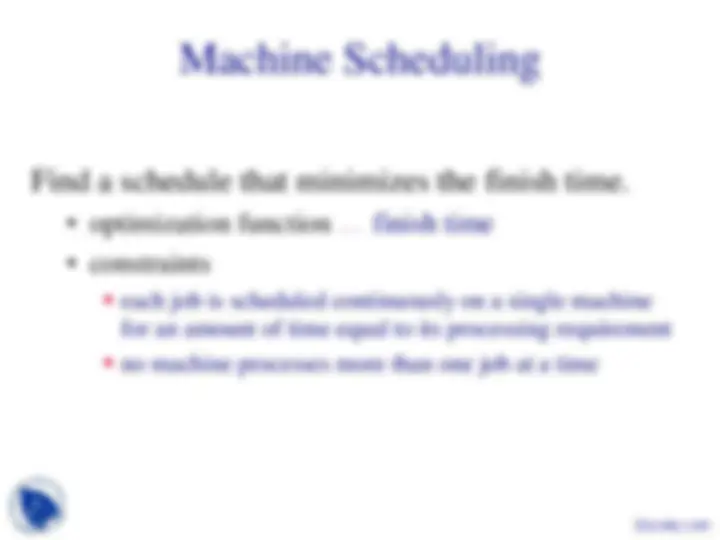
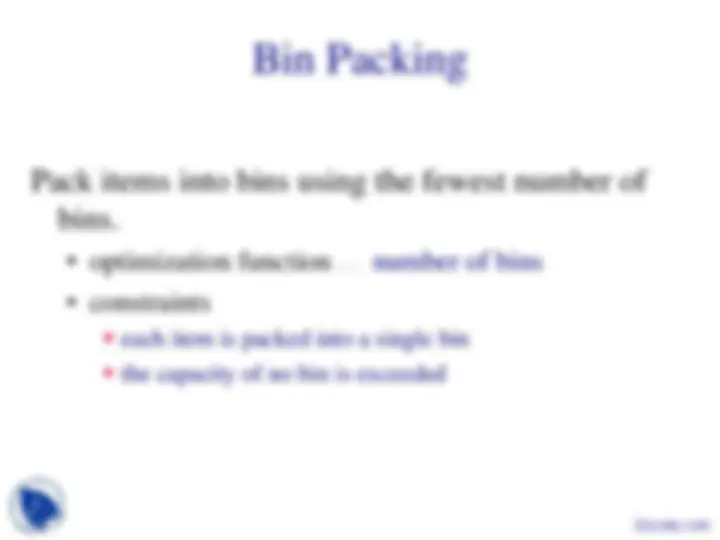
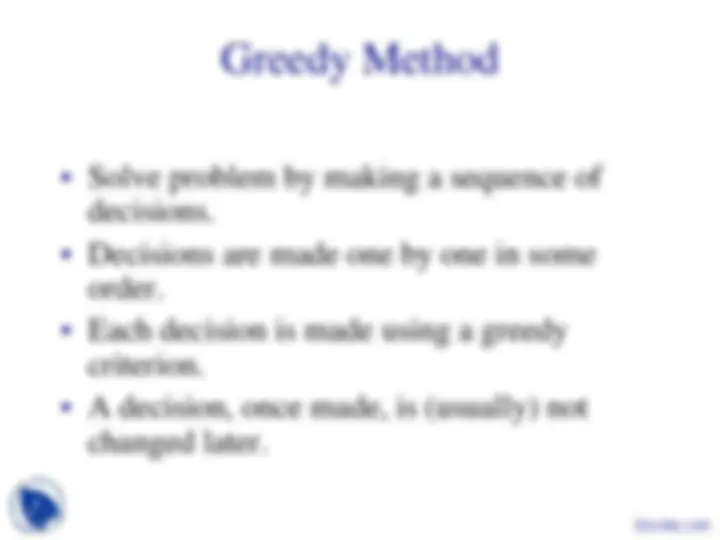
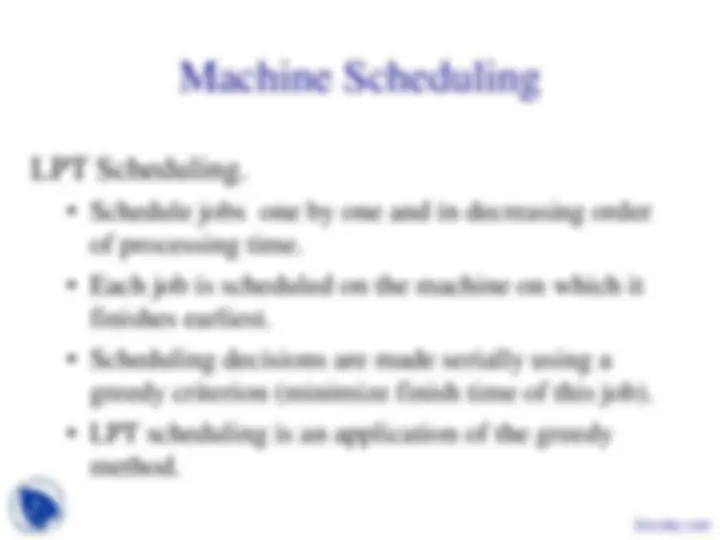
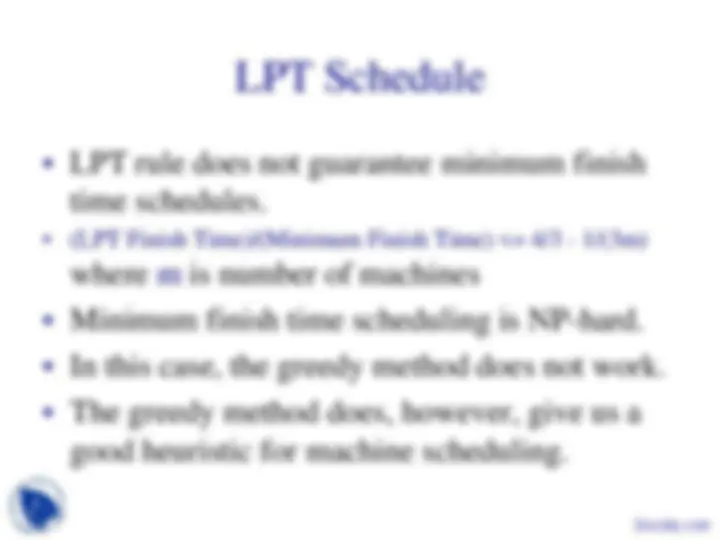
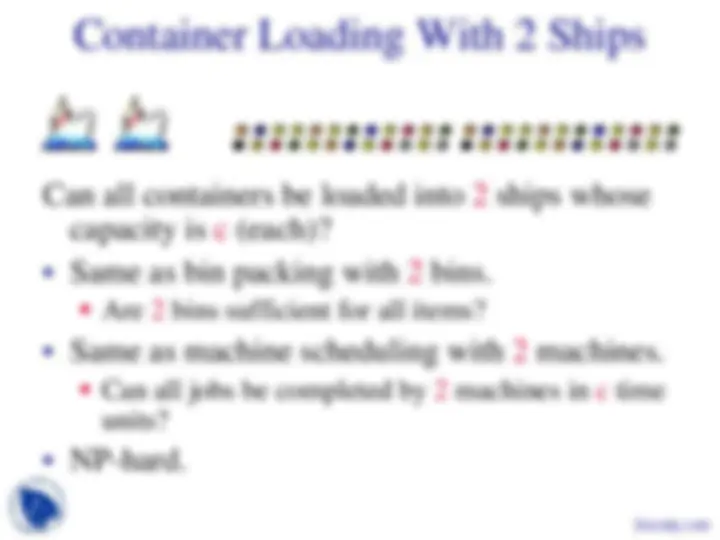
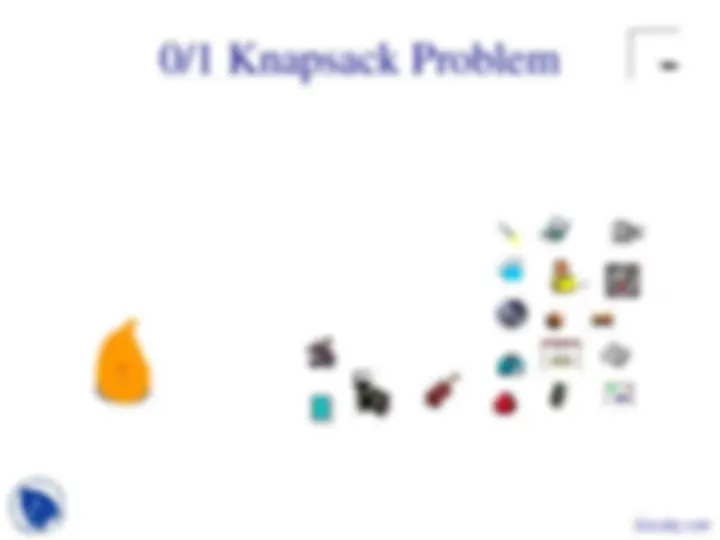
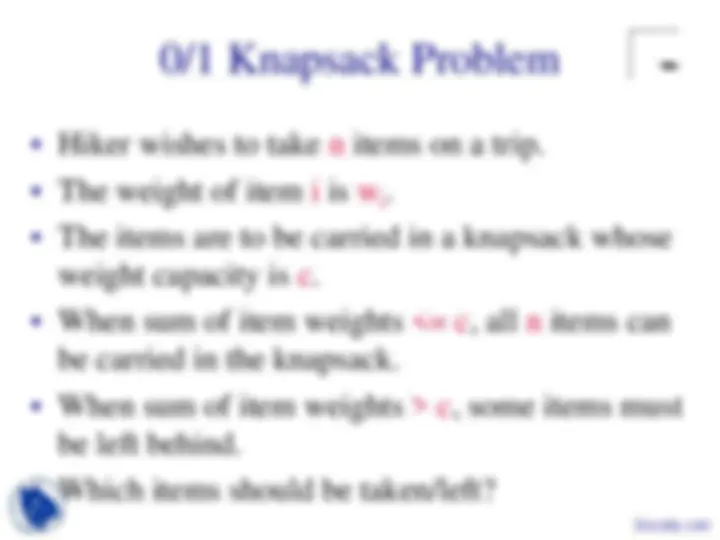
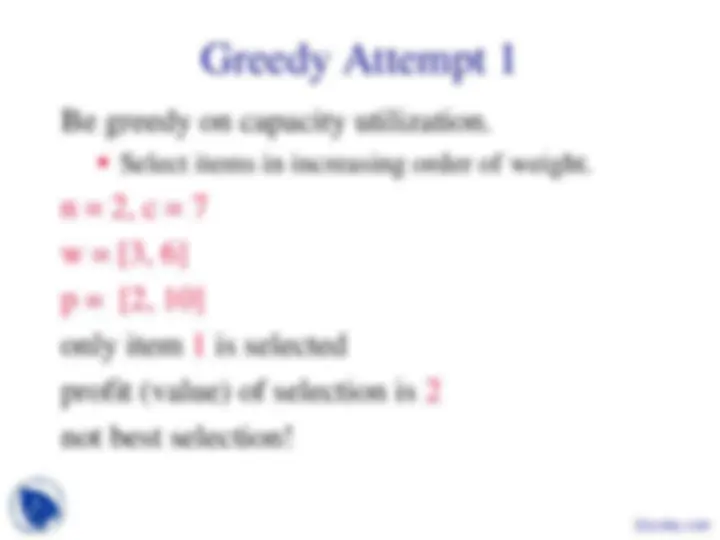
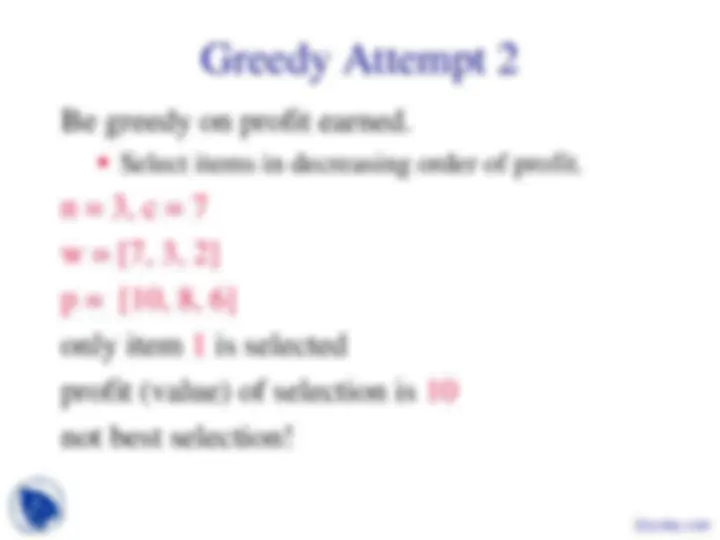
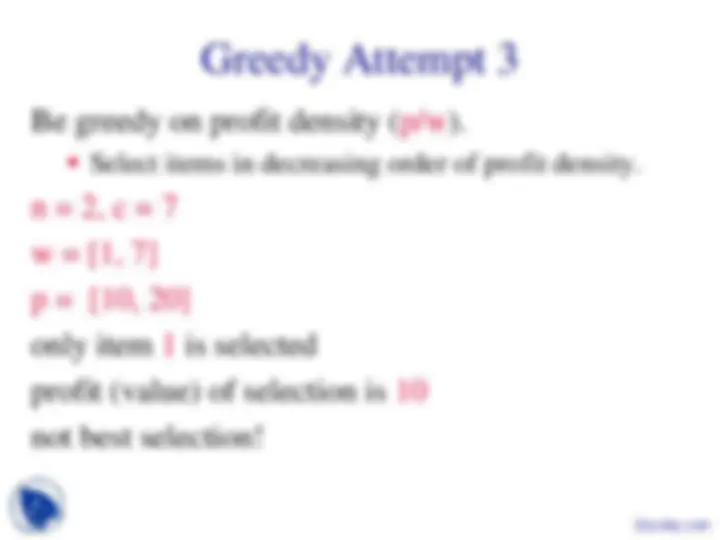
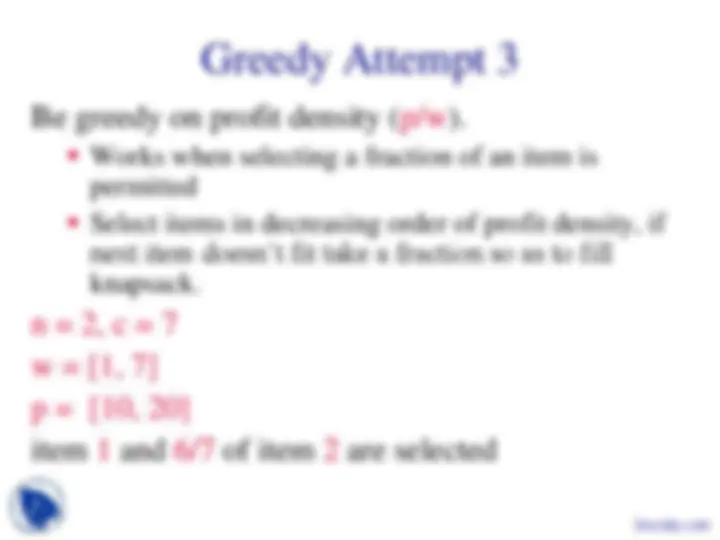
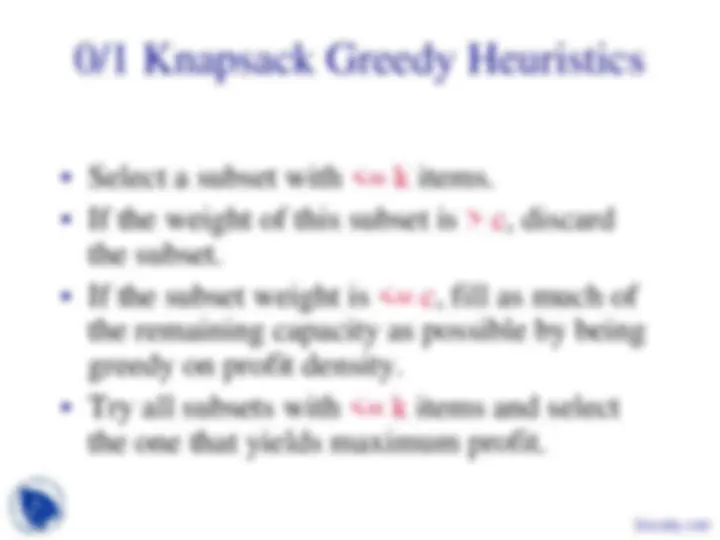
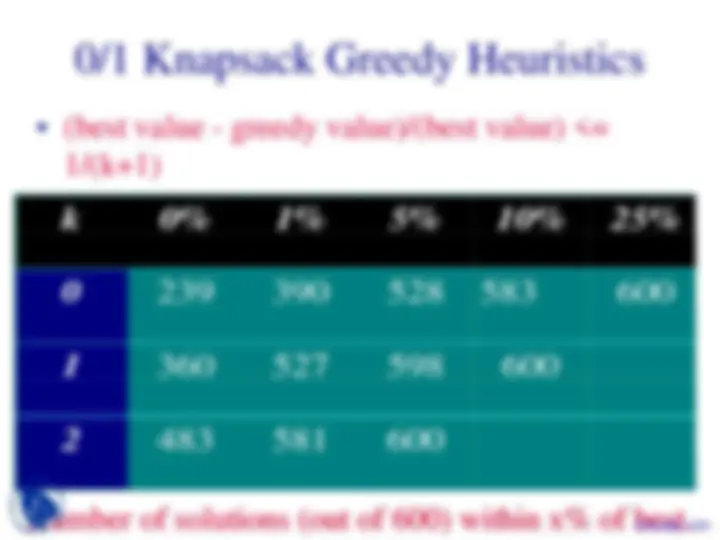
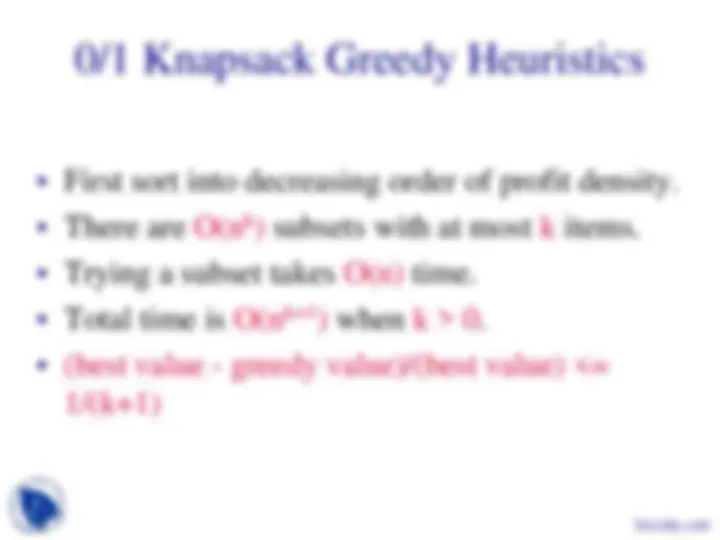


Study with the several resources on Docsity

Earn points by helping other students or get them with a premium plan


Prepare for your exams
Study with the several resources on Docsity

Earn points to download
Earn points by helping other students or get them with a premium plan
Community
Ask the community for help and clear up your study doubts
Discover the best universities in your country according to Docsity users
Free resources
Download our free guides on studying techniques, anxiety management strategies, and thesis advice from Docsity tutors
These are the Lecture Slides of Algorithms and Applications in Java which includes Greedy Method, Divide and Conquer, Dynamic Programming, Backtracking, Branch and Bound, Integer Programming, Neural Networks, Genetic Algorithms, Tabu Search etc.Key important points are: Algorithm Design Methods, Greedy Method, Divide and Conquer, Dynamic Programming, Backtracking, Branch and Bound, Integer Programming, Neural Networks, Genetic Algorithms, Tabu Search
Typology: Slides
1 / 24

This page cannot be seen from the preview
Don't miss anything!

















Find a schedule that minimizes the finish time.
Pack items into bins using the fewest number of bins.
A feasible solution is a solution that satisfies the constraints.
An optimal solution is a feasible solution that optimizes the objective/optimization function.
Can all containers be loaded into 2 ships whose capacity is c (each)?
Let xi = 1 when item i is selected and let xi = 0 when item i is not selected.
i = 1
n maximize pi^ xi
i = 1
n subject to wi^ xi^ <= c
and xi = 0 or 1 for all i
Be greedy on profit earned.
Select items in decreasing order of profit.
n = 3, c = 7
w = [7, 3, 2]
p = [10, 8, 6]
only item 1 is selected
profit (value) of selection is 10
not best selection!
Be greedy on profit density (p/w).
Select items in decreasing order of profit density.
n = 2, c = 7
w = [1, 7]
p = [10, 20]
only item 1 is selected
profit (value) of selection is 10
not best selection!